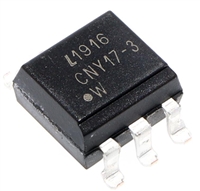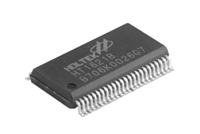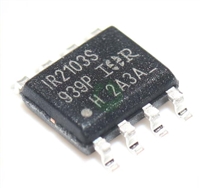| 是否Rohs认证: | 符合 | 生命周期: | Active |
| 零件包装代码: | QFN | 包装说明: | HVQCCN, LCC68,.32SQ,16 |
| 针数: | 68 | Reach Compliance Code: | compliant |
| ECCN代码: | 3A991.A.3 | HTS代码: | 8542.31.00.01 |
| Factory Lead Time: | 1 week | 风险等级: | 5.67 |
| 边界扫描: | YES | 总线兼容性: | I2C; USB; PS/2 |
| 最大时钟频率: | 33 MHz | JESD-30 代码: | S-XQCC-N68 |
| JESD-609代码: | e4 | 长度: | 8 mm |
| 湿度敏感等级: | 3 | I/O 线路数量: | 48 |
| 端子数量: | 68 | 最高工作温度: | 85 °C |
| 最低工作温度: | -40 °C | 封装主体材料: | UNSPECIFIED |
| 封装代码: | HVQCCN | 封装等效代码: | LCC68,.32SQ,16 |
| 封装形状: | SQUARE | 封装形式: | CHIP CARRIER, HEAT SINK/SLUG, VERY THIN PROFILE |
| 峰值回流温度(摄氏度): | 260 | 电源: | 2/5 V |
| 认证状态: | Not Qualified | RAM(字数): | 32768 |
| ROM大小(位): | 2097152 Bits | 座面最大高度: | 1 mm |
| 子类别: | Other uPs/uCs/Peripheral ICs | 最大供电电压: | 5.5 V |
| 最小供电电压: | 1.71 V | 标称供电电压: | 1.8 V |
| 表面贴装: | YES | 技术: | CMOS |
| 温度等级: | INDUSTRIAL | 端子面层: | Nickel/Palladium/Gold (Ni/Pd/Au) |
| 端子形式: | NO LEAD | 端子节距: | 0.4 mm |
| 端子位置: | QUAD | 处于峰值回流温度下的最长时间: | 30 |
| 紫外线可擦: | N | 宽度: | 8 mm |
| Base Number Matches: | 1 |
| 型号 | 品牌 | 替代类型 | 描述 | 数据表 |
| CY8C5468LTI-037 | CYPRESS |
类似代替  |
Programmable System-on-Chip (PSoC?) |

|
| CY8C5467LTI-007 | CYPRESS |
类似代替  |
Programmable System-on-Chip (PSoC?) |

|
| 型号 | 品牌 | 获取价格 | 描述 | 数据表 |
| CY8C5688AXI-LP099 | CYPRESS |
获取价格 |
Multifunction Peripheral, CMOS, PQFP100, TQFP-100 |

|
| CY8C5688AXI-LP099 | INFINEON |
获取价格 |
CY8C56LPxxx |

|
| CY8C5688FNI-LP211 | CYPRESS |
获取价格 |
Multifunction Peripheral, CMOS, PBGA99, WLCSP-99 |

|
| CY8C5688LTI-LP086 | CYPRESS |
获取价格 |
Multifunction Peripheral, CMOS, QFN-68 |

|
| CY8C5688LTI-LP086 | INFINEON |
获取价格 |
CY8C56LPxxx |

|
| CY8C56LP | CYPRESS |
获取价格 |
Programmable System-on-Chip (PSoC®) |

|
| CY8C56LP_13 | CYPRESS |
获取价格 |
Programmable System-on-Chip (PSoC®) |

|
| CY8C5866AXI-LP020 | CYPRESS |
获取价格 |
Programmable System-on-Chip (PSoC®) |

|
| CY8C5866AXI-LP020 | INFINEON |
获取价格 |
CY8C58LPxxx |

|
| CY8C5866AXI-LP021 | CYPRESS |
获取价格 |
Programmable System-on-Chip (PSoC®) |

|
 CNY17F光耦合器:特性、应用、封装、引脚功能及替换型号解析
CNY17F光耦合器:特性、应用、封装、引脚功能及替换型号解析

 DS1307资料解析:特性、引脚说明、替代推荐
DS1307资料解析:特性、引脚说明、替代推荐

 HT1621B资料手册全面解析:引脚功能、电气参数及替换型号推荐
HT1621B资料手册全面解析:引脚功能、电气参数及替换型号推荐

 深入解读IR2103资料手册:引脚说明、电气参数及替换型号推荐
深入解读IR2103资料手册:引脚说明、电气参数及替换型号推荐
